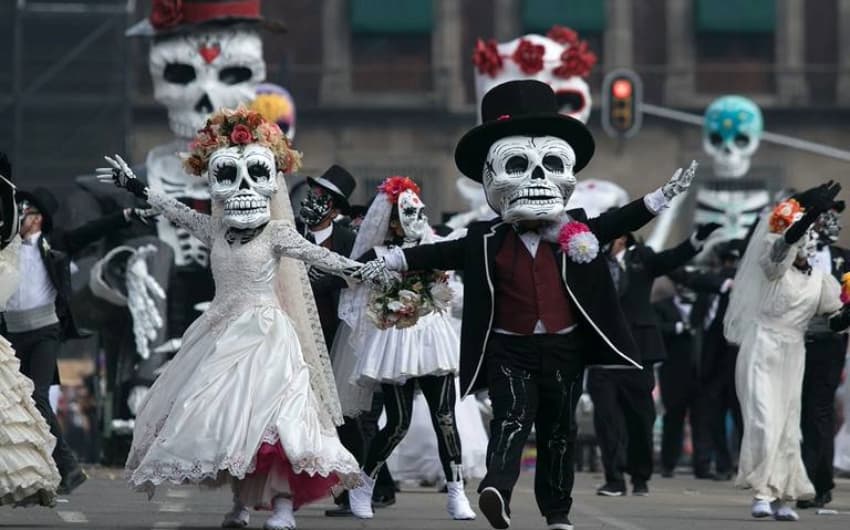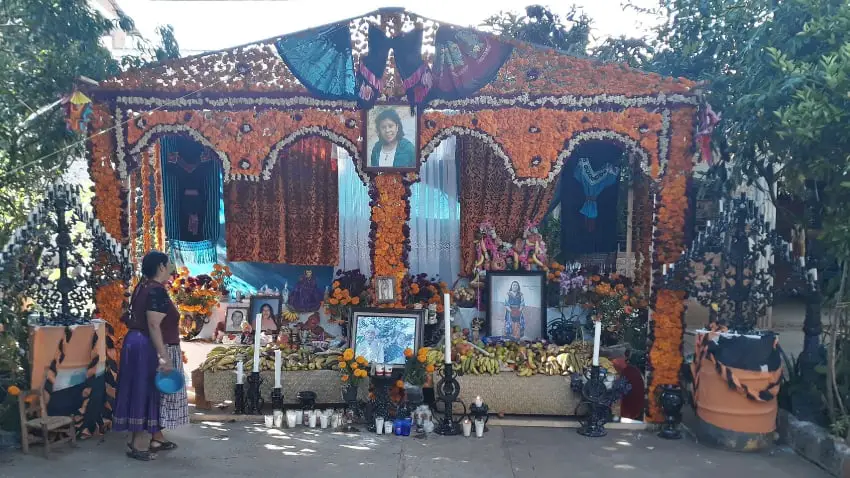Your guide to the holiday as a foreigner

Not so long ago, many Anglos would be repulsed by the whole idea of treating death as anything but something to be ignored at all costs. Acceptance of Day of the Dead in much of the United States – and depictions of it in movies like “Spectre” and “Coco” – have changed that.
However, having only a little knowledge can be a dangerous thing. Not long ago, a tour guide friend of mine came across two young foreign tourists in full “La Catrina” face paint heading to a Michoacán cemetery on Day of the Dead. She tried to talk them out of going like that, but the girls were determined to “experience Day of the Dead to the fullest.” They returned embarrassed. “We should have listened to you, they told her.”
This issue was not that the girls were wearing La Catrina paint, but that they didn’t know where and when to enjoy it.
The origins of Day of the Dead
The holiday is commonly believed to have its origins in the ancient agricultural communities of Mesoamerica. In cultivating the land, Indigenous cultures developed an intimate understanding of the life cycle of crops and the natural forces that guide them. Just as plants died in winter to be reborn in the spring, Mesoamerican peoples believed, so did human beings, and sharing their harvest with their ancestors was a way of ensuring that the cycle would continue. During colonization, Indigenous survivors of the Spanish conquest syncretized their traditions with European ones and kept them alive secretly.
Today, Day of the Dead is a beloved celebration with many local and regional variations. Their common thread is the belief it is possible to get in touch with loved ones who have passed on, most often in the form of food offerings left for them on altars. Families gather in cemeteries by their loved ones’ graves to spend time with the deceased when they return to the world as well.
The evolution of a “secular” Day of the Dead
The images of happy skeletons enjoying life is a relatively recent but still very Mexican innovation. Their creation is credited to 19th-century cartoonist José Guadalupe Posada, who used them in his newspaper work to make political and social statements.
Diego Rivera and other post-Revolution artists adopted them as seen in the mural Dream of a Sunday Afternoon at Alameda Central Park. From there, La Catrina and stylized skeletons organically became an integral part of Day of the Dead.
Public events for the holiday grew in the 20th century, with Mexican films portraying traditional observances as an expression of identity. This is why Lake Pátzcuaro’s celebrations are famous. La Catrina and the company’s connection with both the Mexican Revolution and Rivera made them a natural for events sponsored by local, state and even federal governments. Day of the Dead exists in the north of the country because in the seventies the Education Ministry introduced it there as a way to counter gringo Halloween.

Today, there are essentially two types of Day of Day observances: one rooted in tradition, the other a fun way to be Mexican. While they overlap, the two are not interchangeable.
Desire to conserve the “intimate” Day of the Dead
By the end of the 20th century, long before James Bond or Disney’s help, Day of the Dead became established as big business in Mexico. In the lead-up to last year’s Day of the Dead, the Tourism Ministry predicted spending of 37.7 million pesos. Despite new international interest in the holiday, most of that tourism is still domestic, with only a quarter of Day of the Dead travelers coming from abroad.
Commercialization of the holiday has been butting up against traditional family-oriented observances, especially in places where cemeteries are still located in the center of communities, like in San Andrés Mixquic on the edge of Mexico City. Tour operators like Jonás of Coyo Tours in Mexico City blame local officials for not doing more to conserve the intimate character of cemetery traditions. When you’re in the cemetery surrounded by tourists taking selfies, it’s easy to see his point.
The problem is less pronounced in places like the Yucatán Peninsula, where tourism is focused on the beach rather than culture. There, tourists have relatively little interest in local traditions, says 25-year tour veteran Bernardo Gallo. Those interested in Day of the Dead generally head over to the Xcaret resort for La Catrina-themed activities.
Overcrowding and commercialization have long been problems on Lake Pátzcaro, but no one dares try to limit the number of visitors to Pátzcuaro and Janitzio Island. However, guides Jaime Hernández Balderas and Jen Bjarnasen say that smaller, lesser-known lake communities have taken steps to limit cemetery tourism in favor of local residents, moves that both guides support.
Advice for foreigners during Day of the Dead celebrations
So, how should you experience Day of the Dead to the fullest? Fortunately, there’s no single right answer. If you want to have a good time with dancing skeletons, Mexico has got you covered. If you want to learn about and honor ancient traditions, Mexico has memorable experiences for you as well.
The trick is to know the local culture and environment, and the best way to do that is to take your cues from locals. Otherwise, you risk a faux pas equivalent to wearing an elf costume at a Christmas midnight mass.
Leigh Thelmadatter arrived in Mexico over 20 years ago and fell in love with the land and the culture in particular its handcrafts and art. She is the author of Mexican Cartonería: Paper, Paste and Fiesta (Schiffer 2019). Her culture column appears regularly on Mexico News Daily.
Source: Mexico News Daily

